Esta web utiliza cookies para que podamos ofrecerte la mejor experiencia de usuario posible. La información de las cookies se almacena en tu navegador y realiza funciones tales como reconocerte cuando vuelves a nuestra web o ayudar a nuestro equipo a comprender qué secciones de la web encuentras más interesantes y útiles.
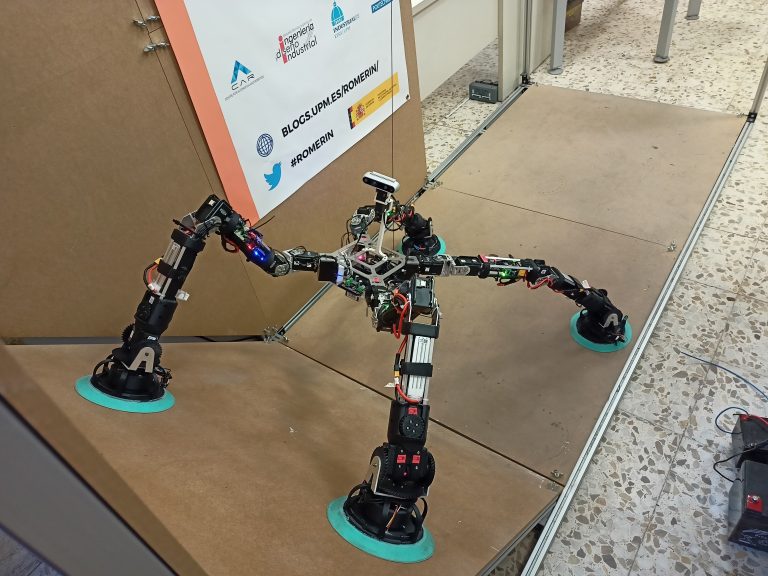
PROJECT OVERVIEW
The use of climbing robots in infrastructure inspection is becoming increasingly relevant. This web page presents most of the ideas used in the development of the ROMERIN project, which aims to build a modular climbing robot. The name of the project comes from “RObot Modular EscaladoR para la INspección de infraestructuras” that is modular climber robot for infrastructure inspection in Spanish.
Over the past half-century, the growth of civil infrastructure in Europe has been particularly intense. Consequently, those facilities require an ever-increasing expense for their inspection, replacement, or, if necessary, disassembly. The analysis carried out by the European consortium SPARC (euRobotics) emphasizes that in the coming years this task will be increasingly important and relevant and foresees that the role that robots will play in maintenance, inspection and dismantling will be critical.

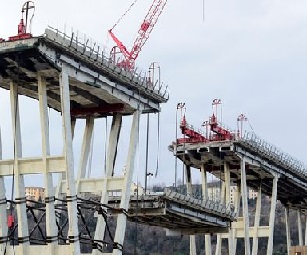
1. The main prototype of ROMERIN is the modular robot. This new concept of climber robot will combine the advantages of UAVs and terrestrial robots to create a new low cost robot that can climb walls of different composition, carrying inspection systems specific to each infrastructure: ultrasound, induced currents, artificial vision, or laser.
The main goal of the project focuses on achieving full modularity from the mechanical, electrical, powering and control point of view. Therefore, the robotic module is a robot in itself; it is a completely autonomous basic unit. It is able to move and manage its own resources. However, it is also prepared to collaborate with others. The main advantages of the robot are listed below:
– Modular design that allows the adaptation of autonomy and load capacity of the system to the task to be developed.
– Adhesion between the leg of the robot and the surface by per leg vacuum generation and monitoring. It has been decided to use suction cups and legs using a turbine to generate the required negative pressure.
– Distributed control using a biomimetic approach of the reflex movements in the control of the legs.
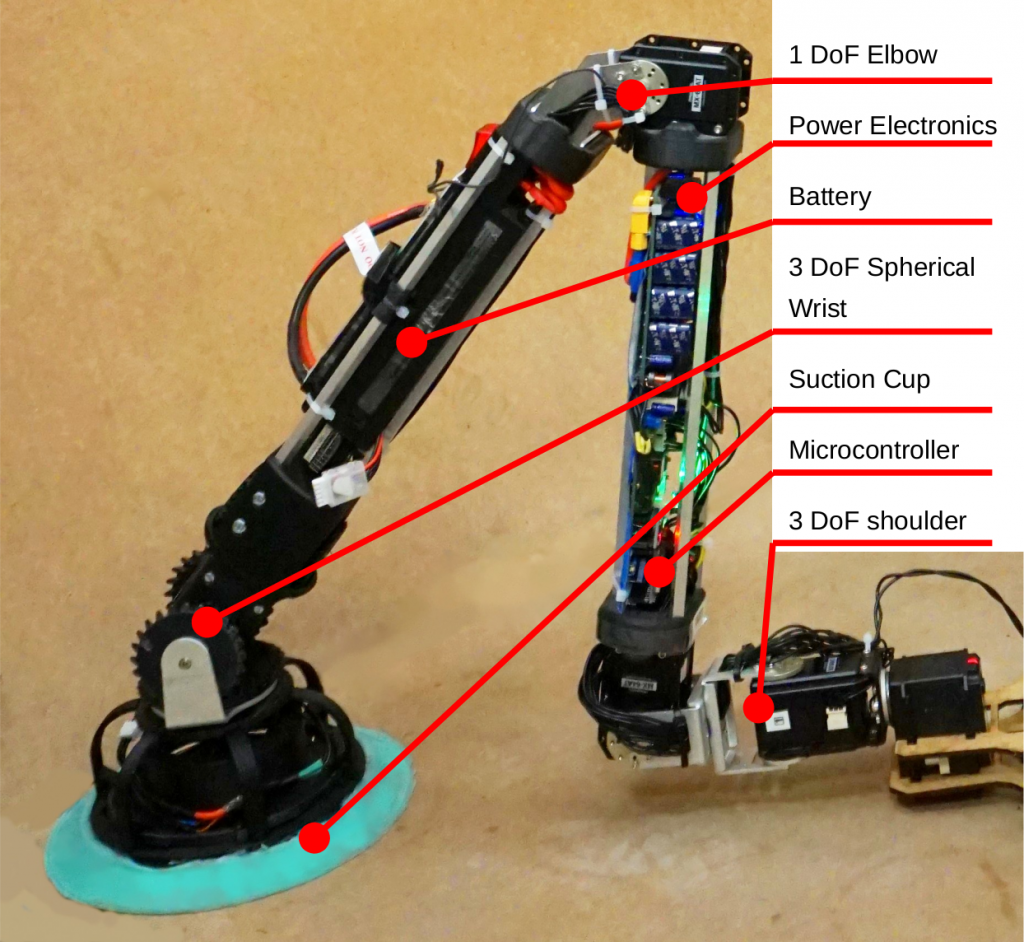
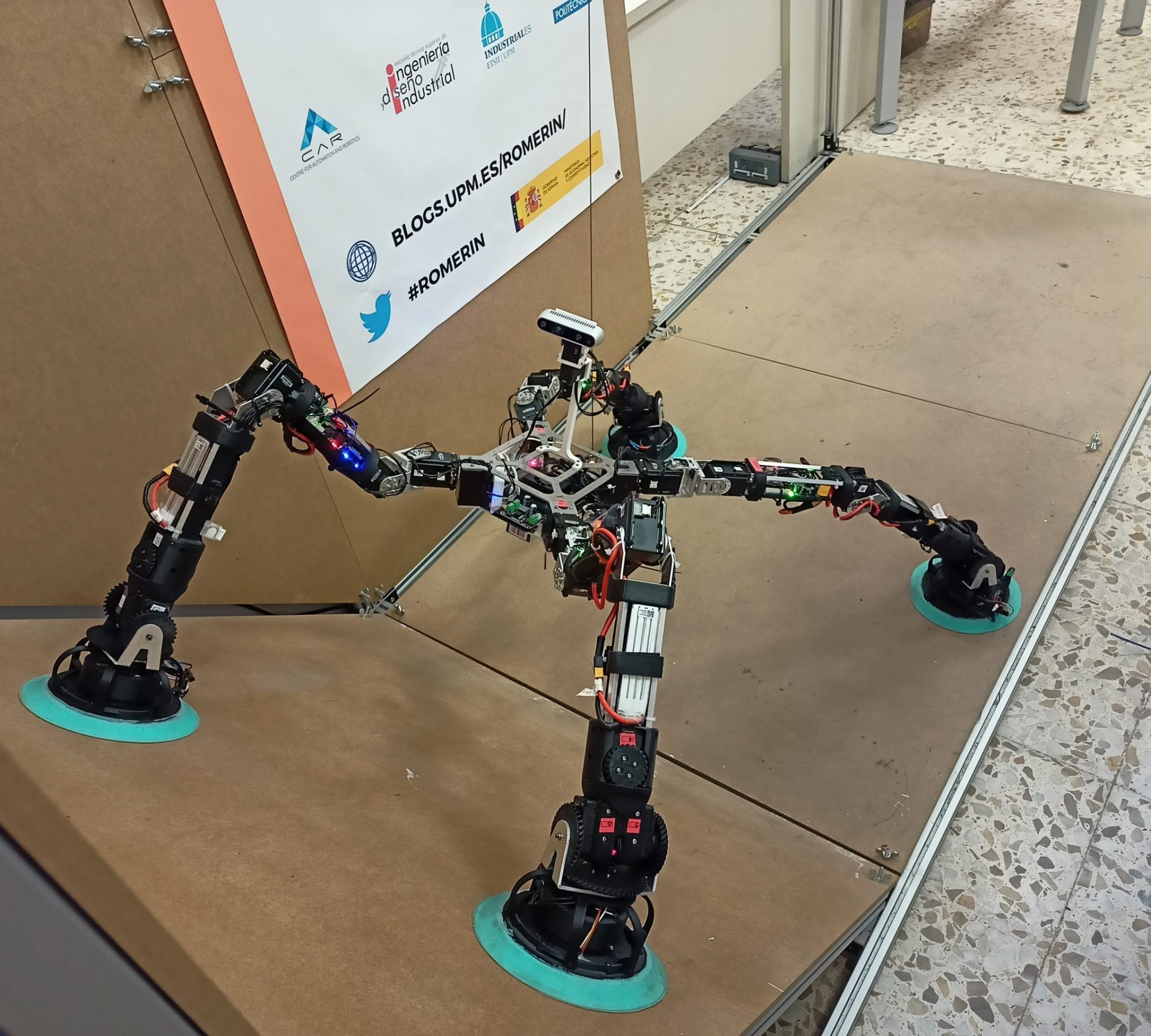
The project, which is still in progress, includes several phases, among which are the design, development and construction of three robots, and tests in real environments, such as tunnel inspection tasks and inspection of cooling towers of nuclear power plants.
The project has been planned with the idea of working on two prototypes in parallel:
2. The first is a hexapod robot based on an existing platform on which to test control algorithms and the adhesion system. For its construction we have modified a robot marketed by the company XYZ Robot (XYZ Bolide Y-01). The mechatronic alterations have been made to this model in order to allow it to adhere to the walls and to improve its step length.
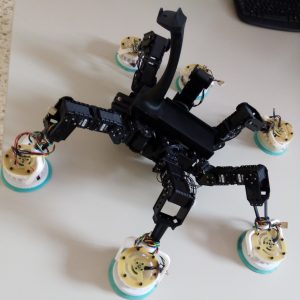
The ROMERIN project (DPI2017-85738-R) is funded by the Spanish Ministry of Science and Innovation (RETOS research and innovation program).


